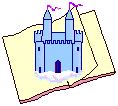Learning to Read
Help children learn to read with our free
interactive games and software. Learning to read is the single
most important part of your child’s education.
Learning to read starts with
learning the letters of the alphabet:
Alphabet Activities - Learn the
ABCs with fun activities
Color
Letters—Become familiar with the ABCs
Learn Letters—Learn to make
the shapes of the letters of the alphabet in an interactive game
Now Online, no downloading!
Once the child is familiar with the alphabet, learning to Read then requires knowing the sounds represented by the
letters:
Letter Sounds—Learn the sounds of the alphabet:
Letter
Sounds—Consonants
Letter
Sounds—Long Vowels
Letter
Sounds—Short Vowels
Letter Sounds—Blends;
How letters combine to make sounds in words
Letter Sounds—“S”
Blends
Next the child puts letters into words and words into
sentences in a fairy tale adventure story.
Bridge to Reading—Learn
to read 100 of the most common words
NOW ONLINE!
Learning to read is an major
accomplishment that opens up new worlds to your child. The goal is for your child to learn to read so fluently
that they do it without thinking about it, like riding a bike. You
learn to ride a bike in order to get somewhere; you learn to read
to find something out. If learning the early skills is easy and
fun, children will want to continue reading.
Being familiar with the letters of the alphabet—both being able to name
them and to write them when given the name—is fundamental to both
reading and writing. The “pieces” of reading are the letters of the
alphabet, initially as shapes with names, then as combinations of shapes
that represent sounds.
The beginning reader gains familiarity with letters and sounds, building
to words and
then sentences. Fluent adult readers do not read letters or parts
of words; we read phrases and sentences to get to the content of what we
are reading.
What is the best order in which to do the games? Color Letters
should come first, Learn Letters
should come next, and then Letter Sounds. However, it is not
necessary to have “finished” Learn Letters to begin Letter Sounds, because
Letter Sounds will further reinforce the meaningfulness of the
letters themselves. Letter Sounds should be done in
order; consonant, vowels then blends.
In Color Letters the student can color a letter and an animal,
or object, whose names starts with that letter.
This program promotes familiarity with the letters of the alphabet, and
the concept that the letters of the alphabet are associated with
specific sounds.
Learn Letters teaches children to recognize the names and shapes of
the lower-case letters in an interactive game. Children learn the
names and shapes of the letters putting them together with a computer
mouse—good for children too young to handle a pencil easily.
Letter Sounds teaches the sounds of the consonants, long vowels, short
vowels and blends in a series of interactive games.
Letter
Sounds—Consonants
Letter
Sounds—Long Vowels
Letter
Sounds—Short Vowels
Letter Sounds—Blends
Letter Sounds—“S”
Blends
Once children are reading they should not be “sounding out” every word.
If every word is a puzzle, there is no attention left for the meaning of
what is being read. In the sentence “Now you and I are going to
see the --------" the -------- could be acrobat, porpoise or
gorilla. Reading
this should be automatic even for a beginning reader until the last word in
the sentence. This also
allows for reading to be exciting.
The “little” words—the 220 Dolch “service words” such as “the” “of”
“one” “are”--make up 50% and more of our what we read. These words
also tend not to follow the phonetic rules, so must be learned by
“sight”.
Bridge to Reading teaches over 100 of the most common sight words teaches over 100 of the most common sight words in
an interactive fairy tale story.
Some kids have been taught to read, so that their reading skills are at
grade-level, but they dislike reading and only read when they have to.
Since they do not read for interest or pleasure, their reading does not
improve. It is important that learning to read is fun, and that it
gives the child a sense of mastery, so that the student will want to
read more.
|
